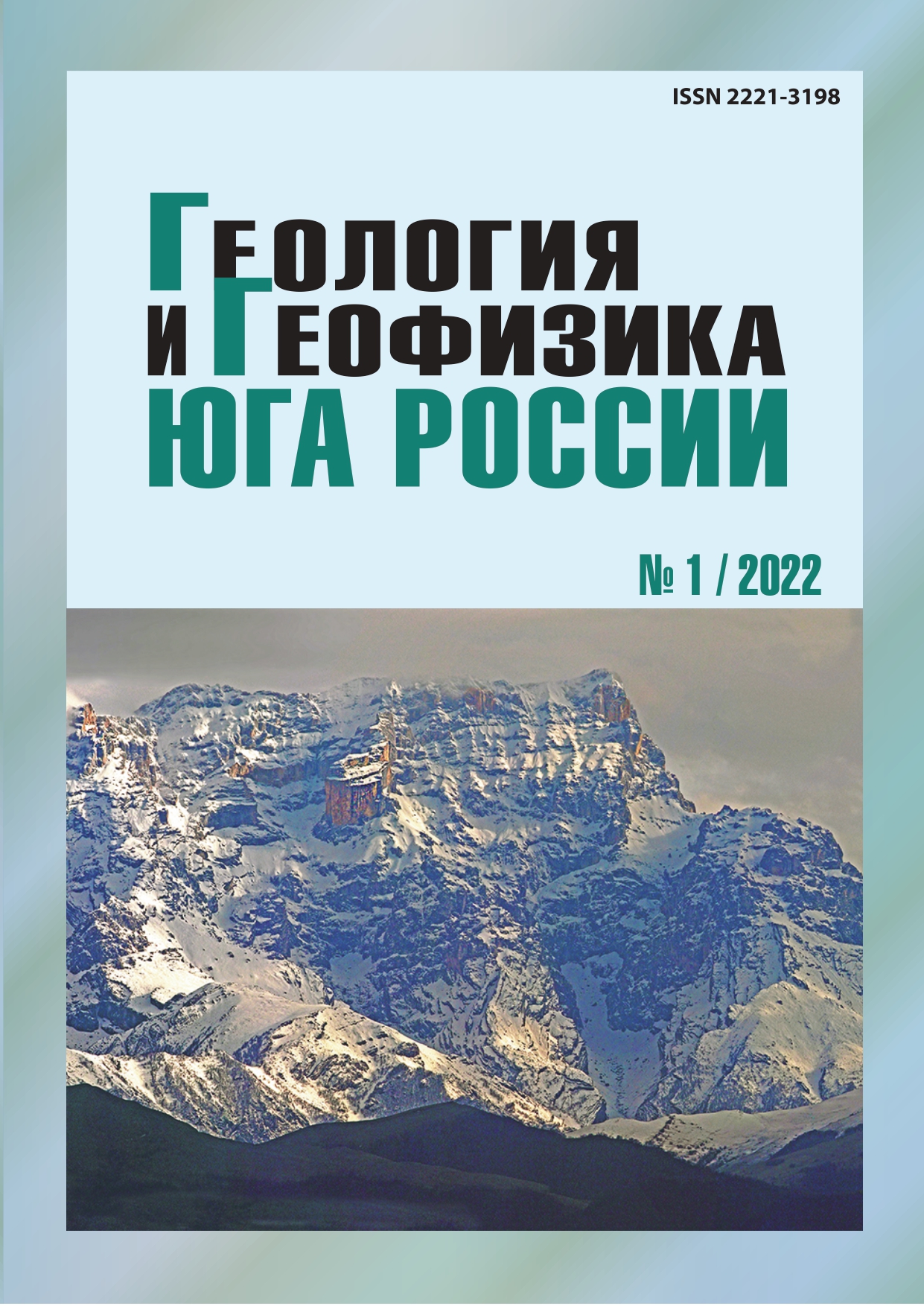Assessment of the potential gold content of the Tyrnyauz ore node based on remote geophysical data (North Caucasus)
Abstract
The relevance of the topic of the proposed article is determined by the need to create scientific and methodological foundations for the development of new environmentally safe methods and technologies for remote assessment of the potential gold content of ore-bearing territories based on geophysical data. The gold-bearing ore occurrences identified in recent years within the Tyrnyauz ore node have signs of industrially significant objects. In this connection, it is assumed that it is possible to overestimate the minerogenic potential of the Tyrnyauz and other Neogene-Quaternary intrusive complexes of the central part of the Greater Caucasus on the basis of the metallogenic concept of gold ore systems used in this case. Aim. Investigation of the features of mapping in potential fields of rare-metal and gold deposits and ore occurrences of the Tyrnyauz ore node (North Caucasus). Materials and methods. Comparative analysis of the geological structure, metallogenic load and transformant potential fields obtained from geophysical data presented in the form of digital models of aeromagnetization and gravity exploration fields to a set of maps of the geophysical basis of the Geological Map of the Russian Federation scale 1:1,000,000 on sheet K-38.39. Based on these data, maps of local anomalies of gravitational and magnetic fields were constructed for the studied area, isolated based on the analysis of amplitude characteristics and reflecting the distribution of density and magnetic characteristics of rocks. Results. It is shown that the gold-ore potential of ore-magmatic systems is determined by the possibility of interaction of granitoid magma with a gold-enriched substrate. Basic and ultrabasic rocks and (or) magmas, as well as carbon-terrigenous strata with an increased Au clarke can act in this capacity. The areas of such interaction are revealed by analyzing gravimetric and magnetometric maps. It is established that the gold-ore manifestations of the Tyrnyauz ore node are located where abnormally elevated values of the magnetic field are recorded within the gravitational minimum. The rare metal deposit and ore occurrences are located outside the positive magnetic anomalies. This provides a key to assessing the prospects for the gold content of ore-magmatic systems of the North Caucasus on the basis of remote geophysical data.


